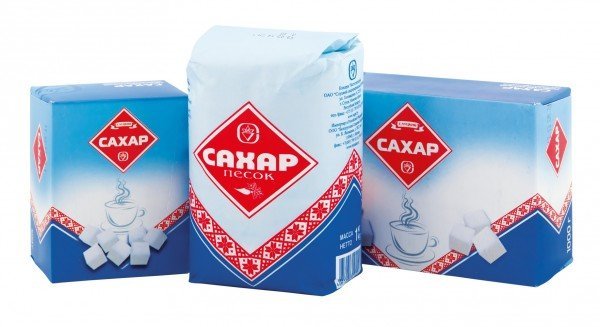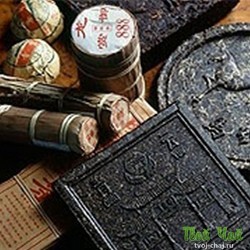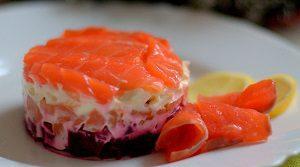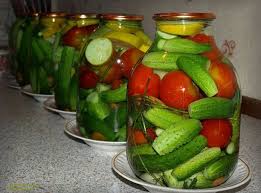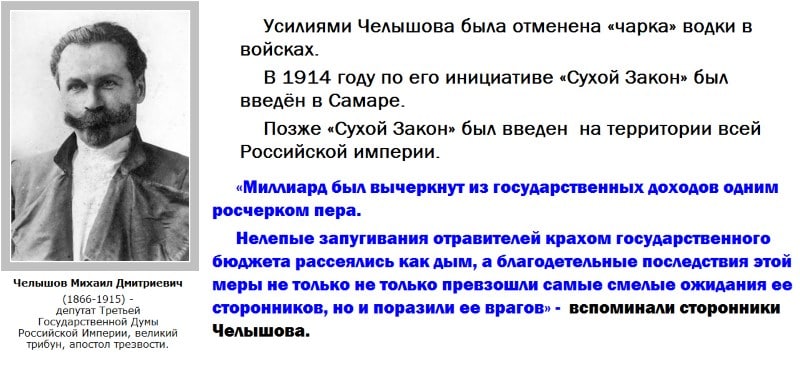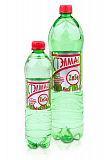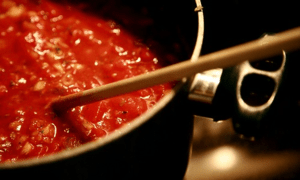Alcoholism Campaign 1990. Gorbachev Anti-Alcohol Company: a year
March 11, 1985, Mikhail Gorbachev took the post of General Secretary of the Central Committee of the CPSU and became the last head of the then great and powerful state. He began his activity with a global restructuring of the system, one of the first stages of which was the anti-alcohol campaign.
The purpose of the Gorbachev anti-alcohol campaign
Gorbachev immediately set a course for the active acceleration of the socio-economic development of the state and began to implement the anti-alcohol program, which they began to jointly prepare at the Central Committee under Brezhnev. However, Leonid Ilich himself did not consider it a priority task and did not support it.
It must be admitted that Gorbachev had the best of intentions. In one of the interviews, he said that the situation with mass drinking had reached a critical point by that moment. Almost half of the adult male population crossed the line of alcoholism, and women also became addicted to the glass. Drunkenness in the workplace, a large number of accidents, children abandoned by alcoholic parents to the mercy of fate - all of these problems required an immediate solution. And then Mikhail Sergeevich decided to fight the situation radically, as they say, slashed off his shoulder.
Global plans and their implementation
On May 16, 1985, the Presidium under the leadership of Gorbachev issued a decree “On Strengthening the Struggle Against Drinking”. The global anti-alcohol campaign began to gain momentum.
The main ways of realization, tangible for the population:
● increase in the price of alcohol by 2 or more times;
● a general decrease in the number of alcoholic beverage outlets;
● time limit for sale (only from 14.00 to 19.00);
● toughening penalties for drinking alcohol in public places (including in city parks, railway trains).
Campaign launched on a grand scale. Everywhere there was a promotion of a healthy lifestyle, non-alcoholic weddings, anniversaries and other festive events. Non-alcoholic champagne appeared on the market, and they were offered to replace the present. But the excesses did not end there, it was just a harmless summit of a “non-alcoholic” iceberg.
Consequences of the anti-alcohol campaign 1985-1990
By the decree of the Central Committee, the people were not ready to give up their addiction and stop drinking. Simultaneously with the beginning of the Gorbachev non-alcohol campaign, the development of the Soviet era of home brewing, underground trade in alcohol and speculation in alcoholic beverages began. Enterprising citizens and taxi drivers were selling home-distilled vodka and vodka. The main “raw material” for home brewing disappeared from the stores - sugar, which soon began to be sold by coupons, and long lines were lined up in the alcoholic beverage departments.
The use of a dubious alcoholic surrogate led to massive outbreaks of poisoning. They drank industrial alcohol, cologne, denatured alcohol and other hazardous substances containing degrees. Partly "vacuum niche" tried to fill the drug traffickers - it was then that began the growth of drug addiction, which has become a global problem.
But the greatest damage was caused to the vineyards. According to reports, about 30% were destroyed - this is a third more than the losses during the Second World War. In Moldova, in the Crimea, in the Kuban, in the North Caucasus, some unique collectible grape varieties were completely exterminated, selection work was prohibited. The persecution of talented breeders who have devoted their whole lives to this has begun.
And also anti-alcohol shock therapy caused serious damage to the country's economy, which from the very beginning of perestroika was not in the best position.
Positive results or embellished facts?
After the start of the anti-alcohol campaign on the ground, they happily reported on the increase in the birth rate, a decrease in crime and an increase in life expectancy. However, in fact, it did not look quite like that. It was in those years that the real outburst of criminals began, so it is more correct to call the data on the reduction of crime the wishful thinking result. And historians and political scientists are more inclined to associate an increase in the birth rate and an increase in life expectancy with the fact that people promised a beautiful life and they believed the slogans, perked up the spirit.
Let's sum up
Anti-alcohol campaign in any country in the world did not produce the expected results. Fighting drunkenness is needed not by prohibitions, but by raising the standard of living.
People who in conscious age caught the end of the 80s remember very well what prohibition in the USSR is 1985-1991. This period is also called the “Gorbachev Dry Law”. Such a term implied a complete (and somewhere partial) ban on the sale of alcohol-containing products.
An exception was the production of alcohol for industrial and medical needs of the country. For the global community, this campaign was not new. But it was she who was remembered by the citizens of the USSR because of its duration. Was there such a taboo effectiveness? And was the game worth the candle?
Gorbachev's dry law became the most memorable among a series of similar experiments.
There is one wise proverb that advises "to learn from the mistakes of others." Unfortunately, it is rare that he understands the meaning of these words, and even more so corresponds to them. Despite the fact that almost all the laws of economics passed through the thorny path of trial and error, the leaders of our country at that time decided not to study the sad experience of other countries.
Prohibition - this is a measure that is not able to destroy all causes of harmful alcohol addiction. The only thing that in the power of such measures is the elimination of the availability of alcohol-containing beverages.
According to the former leaders of the country, such measures should gradually lead to the absolute sobriety of all citizens. Few people know that Gorbachev was not the first general secretary to introduce prohibition in the USSR. Citizens of the Soviet Union faced anti-alcohol campaigns earlier in:
- 1913;
- 1918-1923;
- 1929;
- 1958;
- 1972.
The first attempts to deal with widespread drunkenness were undertaken by Nicholas II. At that distant time, against the background of military operations (World War I) crime on the basis of intoxication sharply increased. This step contributed to saving food costs.

The progenitor of the dry law of 1913-1914 was Chelyshov MD
And then came the revolution. The Bolsheviks, keen on building the new state, were in no hurry to “enrich” the stalls of shops and retail stores with alcohol. It was not before. Only at the beginning of 1923 were people again able to buy alcohol in an affordable sale.
Stalin, who came to power later, was far from being a stupid man and a talented politician. The communist slogan that now everything “belongs to the common people” actually helped the exhausted country to replenish the budget, setting any prices even for poor-quality, low-grade alcohol.

Who introduced and who repealed dry laws in Russia
But why only the ongoing struggle against drunkenness under the regime of the last leader of the Country of the Soviets so brightly bumped into the memory? In those sad years, life in the USSR was held under the auspices of a widespread shortage of goods. The ban on alcohol only aggravated the already irrational psychological state of our citizens.. However, such an event had a number of good reasons.
Prerequisites for the organization of "dry law"
Alcohol at that time was almost the only opportunity to forget and relax for the population of the USSR. One of the main roles played by the fact of lack of motivation to adhere to a sober lifestyle. The salary for all was the same regardless of the quality of work, and there were no penalties for drinking alcohol.
Statistical indicators of that time are striking with horrible numbers: in the period 1960-1980, the death rate from alcohol abuse increased fourfold.
In 1984, each citizen of the USSR accounted for 25-30 liters of pure alcohol (even including infants). While in the country of the pre-revolutionary period, this figure was 3-4 liters.

How did the "dry period"
Another prohibition in Russia was planned to be introduced in the early 80s. But the anti-alcohol campaign was postponed due to the succession of ascensions to the throne and the sudden demise of the leaders of the Country of the Soviets. The main members of the taboo were the following members of the Political Bureau of the Central Committee:
- Solomentsev Mikhail Sergeyevich.
- Ligachev Egor Kuzmich.
They, like Andropov, were deeply convinced that the reasons for the economic stagnation were the growing mass alcoholism of the people. It was in drunkenness that the leaders of the highest echelon of power saw a general decline in moral and moral values and negligence towards work.

The propaganda of a sober way of life in the USSR acquired a grandiose scale.
Gorbachev's dry law had truly gigantic proportions. For the sake of fighting universal popular drunkenness, the state even sharply reduced its own revenues from the sale of alcohol-containing beverages.
The essence of the anti-alcohol campaign
Gorbachev, a promising and promising politician, was well aware of the existing problem and supported a large-scale ban on the sale of alcohol throughout the USSR. The famous anti-alcohol campaign began on May 17, 1985. The new project had the following program:
- It was forbidden to sell alcohol to persons under the age of 21.
- Prohibited and advertising wine production and the process of drinking. It touched television, radio, theater and cinema.
- A complete ban on the sale of vodka products in all catering establishments, with the exception of restaurants.
- Preventing the sale of alcohol near educational institutions of all types, hospitals, health centers, industrial facilities and recreation areas.
- Under the limit fell and the time of the sale of alcohol. Alcohol was now available only from two in the afternoon until seven in the evening.
- Alcohol products were allowed to sell only in strictly specialized departments / locations. The number of such points was regulated by local officials.
The government planned a gradual reduction in the production of alcohol-containing beverages, and by 1988 to stop completely the production of wines. The executive members of the KP and the heads of enterprises were strictly forbidden to drink alcohol, until they were excluded from the Communist Party.
What is achieved by this law
The large-scale anti-alcohol Gorbachev campaign had a number of positive and negative points. According to statistics compiled by 1988, the results of Prohibition were the following results.
Negative points
In all the expanses of a huge country, almost instantly and unexpectedly, citizens stopped the existence of more than 2/3 of shops selling alcohol. Alcohol can now be bought in the period of 14-19 hours. The famous vineyards of Moldavia, the Caucasus and the Crimea were destroyed.

What do opponents of Prohibition say?
One of the main and sad losses from Prohibition was the irretrievable loss of unique grape wine varieties, oblivion of the old traditions of producing exclusive collection wines.
But in the emerging deficit there will always be enterprising citizens who want to earn extra money. Long “businessmen” instantly formed in times of alcohol shortage. Such merchants at that time were known as “speculators, barges”.
But, because of the existing iron curtain, the borders of the USSR were tightly covered, so the underground trade in alcohol was not as massive as during the similar campaign in the United States. At that time, vodka even became a bargaining chip, it was readily agreed to earn some money and pay for it.

In some regions, vodka began to be sold by coupons.
Moonshine brewing has grown rapidly, and at the same time a new class of alcoholics arose - people suffering from substance abuse. Having lost the usual dose of alcohol, the population dependent on it switched to another high. Basically smelled various chemical reagents.
According to confirmed medical data, people suffering from substance abuse are degrading much faster than alcoholics.
Due to the growing brewing, sugar passes were introduced. But the people quickly switched to pharmaceutical tinctures, antifreezes, perfumes and colognes. Meanwhile, the ruling elite, fiercely combating alcohol consumption, was not limited to this and eagerly drank alcohol — it was foreign-made alcoholic beverages.
With drunkenness at the time they fought mercilessly and passionately. Brochures and leaflets about the dangers of alcohol were distributed in large quantities, scenes of alcohol consumption were cut out from the movies. And the people slowly degraded.
Positive sides
However, it should be recognized that there were much more positive moments in such an event. What gave the people dry Gorbachev's law?
- A sharp jump in the birth rate was noted.
- The number of patients in psychiatric hospitals has decreased.
- Reducing the number of crimes committed on the basis of alcohol abuse.
- Almost to zero, mortality from alcohol consumption and poisoning has fallen.
- For the first time in the entire history of the Soviet Union, a sharp decrease in the mortality rate was noted.
- Increased labor discipline. Absenteeism and technical downtime decreased by 38-45%.
- Increased average life expectancy for men. At the time of Prohibition, it was 65-70 years old.
- Decreased statistics and incidents. The number of accidents at work, car accidents dropped by 30%.
- Increased financial income of the people. At that time, the savings banks stated a sharp increase in cash deposits from the public. Citizens brought for storage 40 million rubles more than in the previous period.
Pros and cons in comparative characteristics
| Positive points | Negative sides |
| reduction of alcohol consumption per capita (up to 5 liters per person); vodka production decreased, now they began to produce alcohol by 700-750 million liters less | the number of cases of poisoning of people by alcohol substitutes increased, many were fatal |
| birth rate has increased (at that time in the Soviet Union more than 500,000 babies were born per year) | increased number of moonshiners |
| increased male life expectancy | there was a huge loss of sugar, which became a deficit due to indigo |
| crime rates fell by a record 70%; reduced number of accidents | due to the closure of numerous enterprises producing alcoholic beverage products, a huge number of people lost their jobs |
| labor discipline increased, absenteeism sharply reduced | the level of contraband alcohol has increased |
| increased welfare of citizens | organized crime began to flourish |
Alternative opinion of opponents of the “dry law”
The Gorbachev anti-alcohol campaign had many opponents. After a full-scale research conducted, the experts brought a lot of arguments that questioned all the positive aspects of the “dry law”. They sound like this:
Statistics do not reflect reality. Gorbachev made an artificial shortage of basic products and alcohol to the country. The people managed to fill it with moonshine, which was then cooked in almost every third family. Therefore, the data provided in the statistics are not reliable.
The increase in fertility was not really related to the “dry law”. In fact, faith in the near future, in the new life, which perestroika promised, led to an increase in the number of women in labor. People at that time just had a good emotional lift and confidence that life was about to improve.

Anecdotes of the USSR since the Gorbachev Prohibition
Statistics does not give all the numbers. Speaking about the reduction of alcoholics, the statistics did not say anything about a sharp increase in the number of drug addicts. Many people smoothly moved from scarce alcohol to more affordable and much dangerous drugs.
The same can be said about the emphasis on reducing mortality from cardiovascular problems. This indicator has indeed decreased, but another has increased - the death from the use of toxic substances, drugs.
Most opponents of the anti-alcohol campaign said that Gorbachev had weaned people not from drinking, but from drinking good and high-quality alcohol, having transplanted the country to surrogate and substance abuse.
The reasons for the termination of the anti-alcohol campaign
The main culprit of the termination of the Gorbachev event - the economy. Insidious science has dealt a crushing blow to the country's budget. After all, the alcohol industry brought substantial profits to the treasury, generously filling it. No alcohol - no money for the budget.
At that time, the USSR was already firmly “sitting” on import substitution, because of the steady decline in the oil exchange rate, the state’s gold reserves literally evaporated before our eyes. Therefore, in 1988-1989, opponents of the anti-alcohol campaign under the leadership of Nikolai Ivanovich Ryzhkov were able to put pressure on Gorbachev, and soon the country was again filled with alcoholic beverages.
With the predilection of Russians for alcohol they tried to fight both in Tsarist Russia and in the Soviet Union. When the Bolsheviks came to power in 1917, they administratively banned the production of alcohol until 1923.
Then, attempts to combat drunkenness were made repeatedly - in 1929, 1958, and 1972. However, the anti-alcohol campaign of 1985-1987, which characterized the beginning of perestroika and the government, is considered the most famous and resonant. Mikhail Gorbachev.
Drunkenness fight
On the need for another anti-alcohol campaign first spoke general Secretary of the CPSU Central Committee Yuri Andropov. According to the Soviet leader, the growth of the national economy is slowing down due to a decline in the moral and ethical values of citizens who are addicted to alcohol. Indeed, by 1984, according to official statistics, consumption of alcoholic beverages reached 10.5 liters per person per year, and if you take into account moonshine, then all 14. For comparison, during the times of Tsarist Russia or the rule of Joseph Stalin, one citizen consumed no more than 5 liters alcohol per year. The idea of an anti-alcohol campaign was supported members of the Politburo of the CPSU Central Committee Yegor Ligachev and Mikhail Solomentsev.
On May 7, 1985, a resolution was adopted “On Measures to Overcome Drunkenness and Alcoholism and Eliminate Moonshine”. The document provided for strengthening the fight against the "green snake", as well as reducing the production of alcohol, the time it was sold and the closure of a number of stores selling alcoholic beverages.
And on May 16 of the same year, the Decree of the Presidium of the Supreme Soviet of the USSR “On Strengthening the Struggle against Drinking and Alcoholism, Eradicating Home Brewing” came into force. This document has already introduced administrative and criminal penalties for non-compliance with Prohibition.
“In the 85th year, a month after the ban, I had a wedding. Today, our wedding is remembered with sincere emotion and laughter, relatives are normal Soviet people, they love this business. But since it was impossible to drink, they did the following: they removed all the bottles, put the teapots, poured brandy into them. And all the guests drank tea, washed down with lemonade. Why did you have to hide? And because everyone was a member of the party, they could just kick it out once if they saw brandy on the tables, ”recalls executive Director of the Research Institute of History, Economics and Law Igor Suzdaltsev.
The path to moonshine
As you know, a significant proportion of budget revenues are income from alcohol. It seems that the Soviet authorities sincerely wanted to “cure” citizens from drinking, once they turned a blind eye to the income of the treasury from alcohol. As part of the implementation of prohibition in the USSR, many shops selling alcoholic beverages were closed. The remaining stores could sell alcohol only from 14:00 to 19:00 hours. In addition, the cheapest bottle of vodka in 1986 went up to 9.1 rubles (the average salary was then 196 rubles). Drinkers were forbidden to drink alcohol on boulevards and parks, in long-distance trains. If a citizen was caught drinking alcohol in the wrong place, he could be fired from his job, and the party was expelled from the party.
Meanwhile, the inhabitants of the USSR did not think to abandon the consumption of alcoholic beverages, just instead of “official” alcohol, they switched to moonshine. In addition to the moonshine, alcohol-containing surrogates appeared on the tables of Soviet citizens more and more often.

Soviet anti-alcohol poster
The anti-alcohol campaign caused an irreparable blow to winemaking and viticulture - this structure was planned to be reoriented towards the production of table grapes. The state has reduced the program for financing the laying of new vineyards and caring for the existing plantations. In addition, on the territory of the Soviet republics, the cutting of vineyards was widely practiced. For example, out of 210 thousand hectares of vineyards located in Moldova, 80 thousand were destroyed. In Ukraine, 60 thousand hectares of vineyards were cut down. According to the ex-secretary of the Communist Party Central Committee Yakov Pogrebnyak, the income from the vineyards was one fifth of the budget of Ukraine.
In Russia, over five years (from 1985 to 1990), the area of vineyards decreased from 200 to 168 hectares, and the average annual berry harvest was almost halved - from 850 thousand tons to 430 thousand tons.
Yegor Ligachev and Mikhail Gorbachev denied the involvement of the top leadership of the USSR in the cutting of vineyards. According to Gorbachev, the destruction of the vines were steps against him.
Alcohol "revenge" the budget
As a result, a dry law resulted in budget holes - if before the start of the anti-alcohol campaign, about a quarter of revenues to the state treasury from retail accounted for alcohol, then in 1986 the state treasury income from the food industry amounted to only 38 billion rubles, and in 1987 it was 35 billion rubles instead of the previous 60 billion. The fall in budget revenues from alcohol coincided with the economic crisis that began in 1987, and the Soviet government had to abandon the fight against drunkenness.
The anti-alcohol campaign of the 80s is called the most serious mistake of the perestroika period. Even the initiator Egor Ligachev acknowledged the fallacy of this idea. “I was the most active organizer and promoter of that anti-alcohol campaign.<…> We wanted to quickly rid the people of drunkenness. But we were wrong! To cope with drunkenness, we need many years of active, intelligent anti-alcohol policy, "Ligachev quotes Evgeny Dodolev in the book “Red dozen. The collapse of the USSR.
However, the effect of Prohibition is still ambiguous. Firstly, with such a set of measures, the sale of alcohol per capita has decreased 2.5 times, according to the State Statistics Service. At the same time, life expectancy has increased, the birth rate has increased, and mortality has decreased. According to statistics, during the anti-alcohol campaign, 500,000 children were born more than in recent decades, there were 8% fewer weakened newborns. Moreover, during the period of the dry law, life expectancy among men increased by 2.6 years, which was the maximum in the entire history of Russia.
In May 1985, a new mass anti-alcohol campaign began in the Soviet Union. In order to eradicate drunkenness, all means were used: from promoting a healthy lifestyle to cutting down vineyards. However, the results were very contradictory, the population was dissatisfied, and soon the campaign had to be curtailed. Author website Nikolai Bolshakov recalls how this campaign went.
New campaign
Anti-alcohol campaigns in the Soviet Union were held more than once. 1918, 1929, 1958, 1972 - all these years were marked by a mass struggle against drunkenness. But the most famous campaign was initiated by Mikhail Gorbachev. Having come to power, the general secretary understood that alcohol consumption had become widespread. On average, per capita there were ten liters of alcohol consumed per year, and this had to be somehow fought. Not only the newly-made head of the USSR understood this perfectly, but Egor Ligachev along with Mikhail Solomentsev, who became the ideological inspirers of this campaign. Gorbachev shared his future plans with citizens when he visited Leningrad during his first trip as secretary general in May 1985. And on May 7, the Resolution No. 410 “On Measures to Overcome Drunkenness and Alcoholism and Eradicating Home Brewing” was officially issued by the Council of Ministers. The anti-alcohol campaign in the USSR begins with this decree.
Mikhail Gorbachev, along with Yegor Ligachev - one of the inspirers of the campaign
Offensive on all fronts
The campaign immediately had its own slogan: “Sobriety is the norm of life.” And the newspaper Pravda became the loudest mouthpiece of this large-scale movement. “It should be considered completely unacceptable to use alcohol at work, in public places, to regard such cases as immoral, antisocial behavior, using the full force of law and public opinion against drunkards,” wrote in front of this publication.
Now the scenes of the feast were neatly cut out of the movies and non-alcoholic weddings were welcomed. Alcohol itself could only be obtained strictly at a certain time, and this is from two to seven o'clock in the afternoon, and strictly in special stores. Drink fines were raised, it was forbidden to drink during production. And throughout the country organized a society of sobriety and a healthy lifestyle. In general, it was planned to gradually reduce the production of vodka by ten percent each year, and to stop producing wine products by 1989. Because the anti-alcohol war has caused great damage to the wine industry.

The queues in the shops for alcohol beat all records
Anti-alcohol campaign has hit hard in the wine industry
In Moldova and in Abrau-Durso, where wine is a traditional commodity of production, and in many other places vineyards were massively cut down. According to official data, only in the Moldavian SSR 80 thousand hectares of vineyards were destroyed.
Contradictory results
The most active phase of the campaign came from 1985 to 1987. It will be announced that such actions have prevented more than a million deaths. In fact, the production of alcoholic beverages was halved, and the output of wine products was cut by two thirds. But all these actions to combat drunkenness adversely affected the population. First of all, there was a sharp increase in speculation, and the demand for sugar and other goods, including toothpaste, eau de cologne, and other alcohol-containing products, increased manifold. Every tenth worker from the sphere of commerce was accused of speculation, and more than 60 thousand people were prosecuted for violating the sale of alcohol.
Near the shops everywhere there were fights and long lines. Many people switched to moonshine. There are also many addicts and drug addicts among adults and young people. According to the USSR Ministry of Internal Affairs, the use of moonshine and other intoxicating substances led to the poisoning of more than forty thousand people, of whom eleven thousand died. The number of drug addicts doubled from 1985 to 1987.

During one of the anti-alcohol rallies
It was announced that the campaign had saved the lives of a million people.
The campaign struck not only the population, but also the Soviet budget, which was already suffering from a deficit at that time. In total, the state treasury received less than 19 billion rubles from the trade sector. And because of the loss in the production of wine, another 6.8 billion were missed. As a result, discontent throughout the country forced Mikhail Gorbachev to slow down the anti-alcohol campaign. Soon followed the abolition of the state monopoly on the sale of alcoholic beverages, and the fight against drunkenness gradually went nowhere. Ivan Laptev, chairman of the All-Union Society of the Struggle for Sober Lifestyles, then writes: “They didn’t drink less in Russia, the culture of drinking did not improve, the green serpent, lying down in cellars and cellars, remained the best friend of the Soviet man.”
Mikhail Gorbachev dubbed "lemonade Joe" because of the fight against drunkenness
Mikhail Gorbachev himself will be called the "mineral secretary" and "lemonade Joe" by the people. Nevertheless, the campaign was highly appreciated by the world community. “She delayed the deaths of millions of people at risk of losing their lives as a result of accidents, alcohol poisoning or suicide,” a UN report said.
A resolution was issued on the resumption of the production and trade in alcoholic beverages in the USSR.
Campaign of 1929
1958 Campaign
1972 campaign
The next anti-alcohol campaign began in 1972. On May 16, Resolution No. 361 “On Measures to Strengthen the Struggle Against Alcoholism and Alcoholism” was published. It was supposed to reduce the production of strong alcoholic beverages, but instead to expand the production of grape wine, beer and soft drinks. Alcohol prices have also been raised; production of vodka of 50 and 56 ° has been discontinued; the time of trade in alcoholic beverages with a fortress of 30 ° and above was limited to the interval from 11 to 19 hours; Labor-and-labor dispensaries (LTPs) were created, where people were forcibly sent; from movies cut scenes with the use of alcoholic beverages. Campaign slogan: “Drinking is a fight!”
1985-1990 campaign
Currently, the anti-alcohol campaign of the period - years, which took place at the very beginning of Perestroika (the so-called “acceleration” period), is the most famous, when, despite the previous stages of the struggle, alcohol consumption in the USSR grew steadily. It began two months after Mikhail S. Gorbachev came to power and therefore received the name "Gorbachev".
By the end of the 1970s, alcohol consumption in the USSR reached a record level in the history of the country. Consumption of alcohol, which did not exceed 5 liters per person per year, neither in the Russian Empire nor in the Stalin era, reached the level of 10.5 liters of registered alcohol by 1984, and, taking into account the underground moonshine, could exceed 14 liters. It is estimated that this level of consumption was equivalent to about 90-110 bottles of vodka per year for each adult man, excluding a small number of sober (vodka itself was about of this volume. The rest of the alcohol was consumed in the form of moonshine, wine and beer).
The campaign was initiated by members of the Political Bureau of the Central Committee of the CPSU, MS S. Solomentsev and E. K. Ligachev, who, following Yu. V. Andropov, believed that one of the reasons for the stagnation of the Soviet economy was the general decline of moral values of the “builders of communism” and negligence to work in which mass alcoholism was guilty.
The performance was unprecedented in scale. For the first time, the state began reducing the income from alcohol, which was a significant item of the state budget (about 30%), and began to drastically reduce its production. After the start of the fight against drunkenness in the country, a large number of stores selling liquor and vodka products were closed. Often at this complex anti-alcohol activities in some regions ended. Thus, the first secretary of the Moscow city committee of the CPSU, Viktor Grishin, closed many alcohol shops and reported to the Central Committee that the work on the sobering up in Moscow had been completed. Prices for vodka were raised several times: a popular vodka, popularly known as Andropovka, which cost 4 rubles before the start of the campaign. 70 k., Disappeared from the shelves, and since August 1986, the cheapest vodka cost 9 p. 10 k.
Shops that sold alcohol, could do it only from 14:00 to 19:00. In this regard, the popular has spread:
Tough measures were taken against drinking alcohol in parks and public gardens, as well as in long-distance trains. Caught drunk had serious trouble at work. For the use of alcohol in the workplace - was dismissed from work and expelled from the party. Banquets related to dissertation defense were banned, non-alcoholic weddings were promoted. So-called “sobriety zones” appeared in which alcohol was not sold.
Trade unions, the entire education and health care system, all public organizations and even creative unions (writers 'and composers' unions, etc.) were also drawn into this task without fail.
The campaign was accompanied by intense sobriety propaganda. Everywhere articles by Academician of the Academy of Medical Sciences of the USSR, FG Uglov, began to spread about the dangers and inadmissibility of alcohol consumption under any circumstances and that drunkenness is not characteristic of the Russian people. The censorship removed and paraphrased texts of literary works and songs, cut out the alcoholic scenes from theatrical productions and movies, let the “non-alcoholic” militant “Lemonade Joe” (as a result of the nickname “Lemonade Joe” and “mineral secretary” firmly entrenched for Mikhail Gorbachev).
Influence on viticulture and winemaking
The campaign had a very negative impact on the wine industry and its raw material base - viticulture. In particular, allocations for the establishment of vineyards and planting care were sharply reduced, and the taxation of farms was increased. The main policy document determining the future development of viticulture was approved by the XXVII Congress of the CPSU. The main directions of social and economic development of the USSR for 1986-1990 and for the period up to 2000, in which it was written: “To carry out a fundamental restructuring of the structure of viticulture in the Union republics its primarily on the production of table grapes. "
In many publications criticizing the anti-alcohol campaign, it is said that at that time many vineyards were cut down. Vineyards were cut down in Russia, Ukraine, Moldova and other republics of the USSR.
From 1985 to 1990, the area of vineyards in Russia was reduced from 200 to 168 thousand hectares, the restoration of uprooted vineyards was halved, and the laying of new ones was not made at all. The average annual grape harvest fell compared with the period 1981-1985 from 850 thousand to 430 thousand tons.
The ex-secretary of the Central Committee of the Communist Party of Ukraine, Yakov Pogrebnyak, who oversaw the control over the implementation of the resolution of the Central Committee of the CPSU on intensifying the fight against drunkenness and alcoholism through the Central Committee of the Communist Party of Ukraine, tells:
The trouble is that during the struggle for sobriety Ukraine lost about a fifth of its budget, 60 thousand hectares of vineyards were uprooted in the republic, the famous Massandra winery was saved only by the intervention of Vladimir Scherbitsky and the first secretary of the Crimean regional committee of the Makarenko party. The active conductors of the anti-alcohol campaign were the secretaries of the CPSU Central Committee, Egor Ligachev and Mikhail Solomentsev, who insisted on destroying vineyards. During their vacation in the Crimea, Yegor Kuzmich was taken to the “Massandra”. There, for all 150 years of existence of the famous plant, samples of produced wines are stored - a vinotheque. Such vaults have all the famous wineries of the world. But Ligachev said: “This winery must be destroyed, and Massandra should be closed!” Vladimir Scherbitsky could not stand it and called Gorbachev directly, they say, this is already a bend, and not a fight against drunkenness. Mikhail Sergeevich said: “Well, save.”
The first secretary of the Crimean Regional Committee of the CPSU, Viktor Makarenko, confirms the words of Pogrebnyak. According to him, " Ligachev demanded to destroy the vineyards as the primary basis for the production of alcoholic beverages. He even insisted on liquidating the famous Massandra wine cellar. Only personal intervention Scherbitsky saved her» .
Ligachev himself in his 2010 interview gave a refutation of cutting down vineyards on instructions from above, said that the campaign itself and he had been deceived about it, including that “Ligachev, resting in the Crimea, came to Massandra and personally closed the winery. One of the leaders died of grief. I want to say: Ligachev has never been to Massandra ”.
According to some reports, 30% of the vineyards were destroyed, compared with 22% during the Great Patriotic War. According to the materials of the XXVIII Congress of the Communist Party of Ukraine, 2 billion rubles were needed to restore the losses of 265 thousand vineyards destroyed and 5 years. The dissertation on the management of the wine industry states that viticulture in Russia was threatened three times and one of these periods - “1985-1990 yy - „Fight“ against drunkenness and alcoholism ”.
However, the campaign initiator Egor Ligachev claims that in 1985 (at the beginning of the campaign) the vineyard area was 1 million 260 thousand hectares, in 1988 (after its completion) - 1 million 210 thousand hectares, respectively, grape harvest - 5.8 and 5, 9 million tons. Mikhail Solomentsev in an interview in 2003 to the question “Why, in the south of Russia, in the Crimea and in Moldova were many vineyards cut down?” Replied: “We have 92% of technical grapes grown and only 2% of table grapes. It was recommended to increase the production of table grapes. A cleaning-cutting of the vine goes constantly. If before the resolution 75 thousand hectares of vineyards were cut down, then after - 73 thousand hectares
Mikhail Gorbachev claims that he did not insist on destroying vineyards: "The fact that they povyrubali vine, these were steps against me." In an interview in 1991, he stated: “During the anti-alcohol campaign, they tried to make a hard-horned sober person from me.”
The biggest loss was that unique collectible grapes were destroyed. For example, the Ekim-kara grape variety, a component of the Black Doctor wine, famous in Soviet times, was completely destroyed. Selection work was subjected to particularly harsh persecutions. As a result of the persecution and a number of unsuccessful attempts to convince Mikhail Gorbachev to cancel the destruction of the vineyards, one of the leading scientists and breeders committed suicide, director Pavel Golodriga, doctor of biological sciences.
Relations with the CMEA countries — Hungary, Romania, Bulgaria — were severely complicated, most of which was produced for export to the USSR. Vneshtorg refused to buy wine in these countries, offering to compensate for lost profits in other goods.
results
The increase in the consumption of “illegal” alcohol did not compensate for the fall in the consumption of alcohol “legal”, with the result that a real reduction in total alcohol consumption was still observed, which explains the beneficial effects (reduction in mortality and crime, increase in the birth rate and life expectancy) that were observed during the anti-alcohol campaign.
Aimed at the “moral improvement” of Soviet society, the anti-alcohol campaign in reality achieved completely different results. In the mass consciousness, it was perceived as an absurd initiative of the authorities, directed against the “common people”. For those widely involved in the shadow economy and the party and economic elite (where the feast with alcohol was a nomenklatura tradition), alcohol was still available, and ordinary consumers had to “get” it.
The reduction in alcohol sales caused serious damage to the Soviet budget system, since the average annual retail turnover decreased by 16 billion rubles. The damage to the budget turned out to be unexpectedly great: instead of the previous 60 billion rubles in revenue, the food industry brought 38 billion in 1986 and 35 billion in 1987. Until 1985, alcohol gave about 25% of revenues to the budget from retail, due to high prices for it prices of bread, milk, sugar and other products. Losses from the reduction of sales of alcohol were not compensated, by the end of 1986 the budget actually collapsed.
At the same time, it powerfully stimulated the growth of the shadow economy. V. F. Grushko (former First Deputy Chairman of the KGB of the USSR) in his memoirs “The Fate of the Scout” commented as follows on the results of the anti-alcohol campaign:
| we got a whole bunch of problems: an astronomical jump in shadow incomes and the accumulation of initial private capital, rapid growth of corruption, the disappearance of sugar from sales for moonshine cooking ... In short, the results were directly opposite to the expected, and the treasury was short of huge budgetary amounts, which turned out to be no compensation. |
Mass dissatisfaction with the campaign and the economic crisis that began in 1987 in the USSR forced the Soviet leadership to curb the fight against alcohol production and consumption. Although the decrees restricting the sale and consumption of alcohol were not canceled (for example, the formal ban on the sale of alcohol until 14 o'clock was canceled only on July 24, 1990 by USSR Council of Ministers Decree No. 724), active propaganda of sobriety was stopped, and alcohol sales went up. It is estimated that the average consumption of alcohol per capita significantly exceeded the initial level by 1994, which resulted in a completely catastrophic increase in mortality in Russia.
In culture
The last Soviet anti-alcohol campaign was reflected in the culture. So, Andrei Makarevich, for the movie “Start over from the beginning”, was forced to replace the words “Conversation in a train” (1987) [ ] :
When there is nothing more to drink.
But the train is coming, the bottle is empty,
And pulls to talk.
But, in connection with the campaign, Andrei Makarevich had to write another option:
Carriage disputes - the last thing
And porridge from them not to cook.
But the train is coming, it is dark in the window,
And pulls to talk.
At the time of the anti-alcohol campaign, methods of covert storage of alcohol in kettles, jerrycans and other unusual things were common. In the song of the group "Lube" "The guys from our yard" were the words: " Remember, beer was worn in a can, Oh, the whole yard cursed it ... »
The rock group "Zoo", in turn, created and recorded a satirical song "Sobriety - the norm of life", in which in a cynical form ridiculed the propaganda cliches of that time (non-alcoholic bars, weddings, etc.).
The song of the Leningrad group “Situation” “Dry Law” is also devoted to the Soviet anti-alcohol campaign and its consequences.
Hidden hint on the anti-alcohol campaign and the typical phenomena thereof (use of alcohol-containing surrogates, moonshine and sale of moonshine from under the floor) present in the song "Cucumber lotion" group "Automatic Satisfaction".
see also
Notes
- G. G. Zaigraev.

